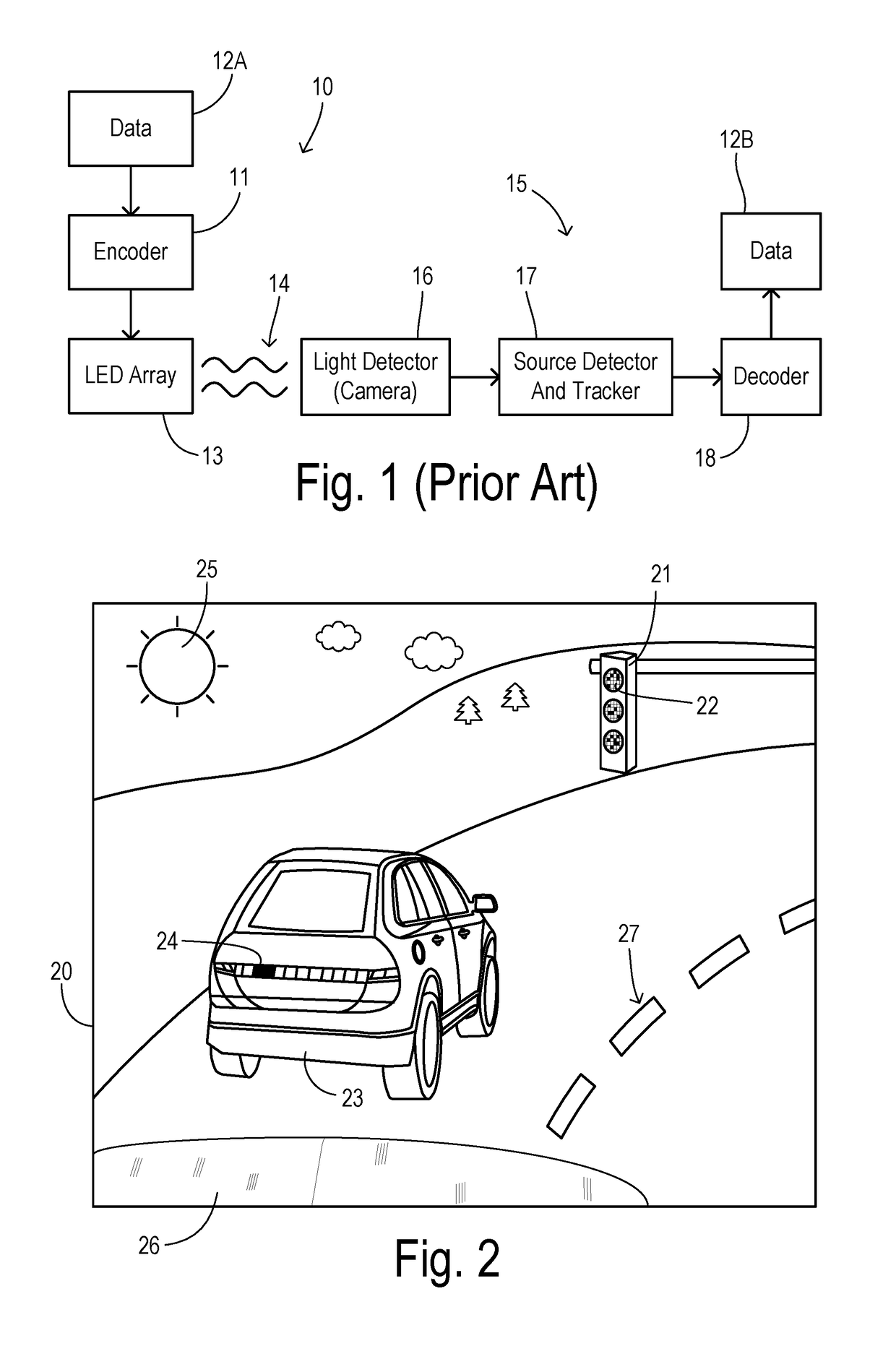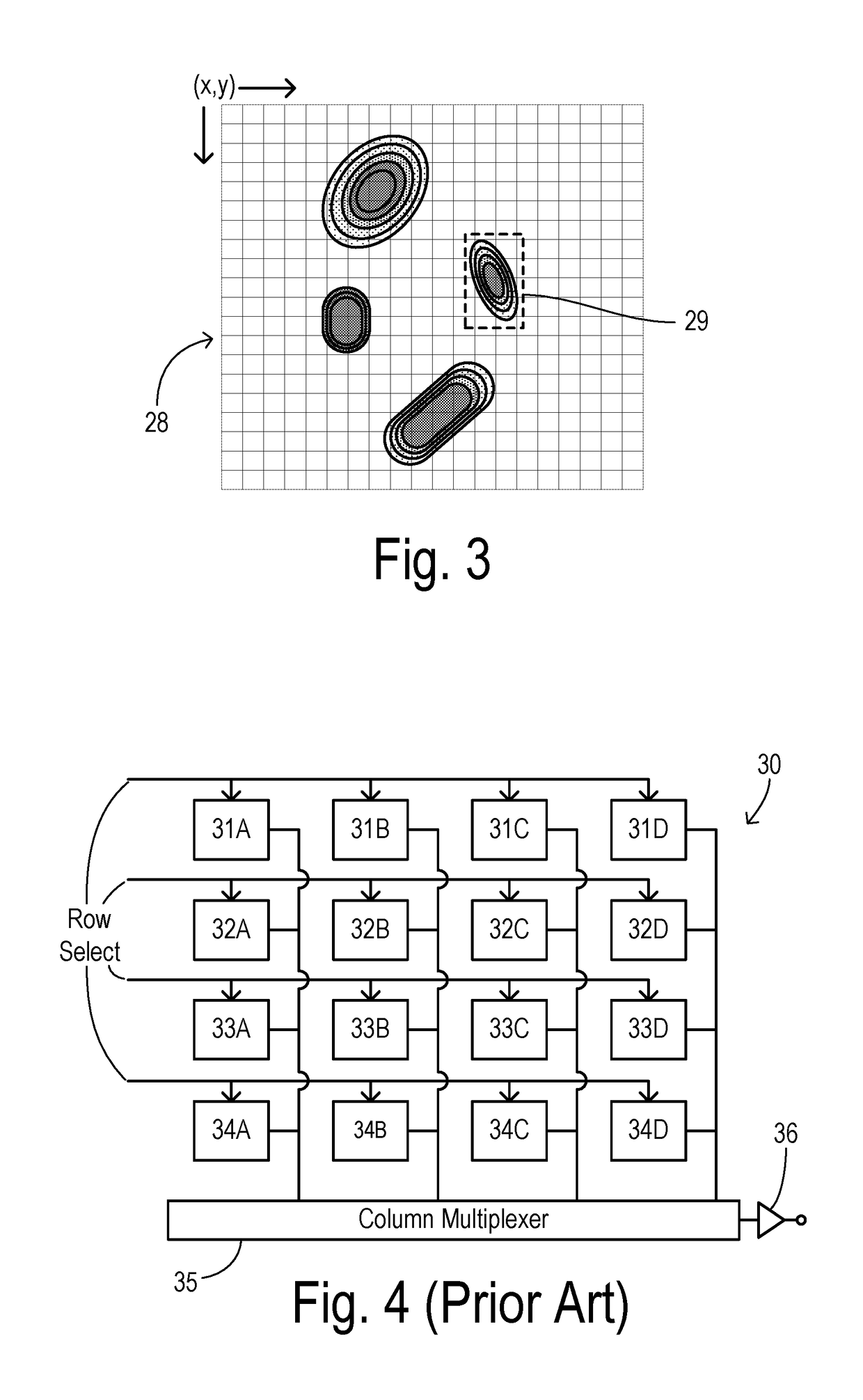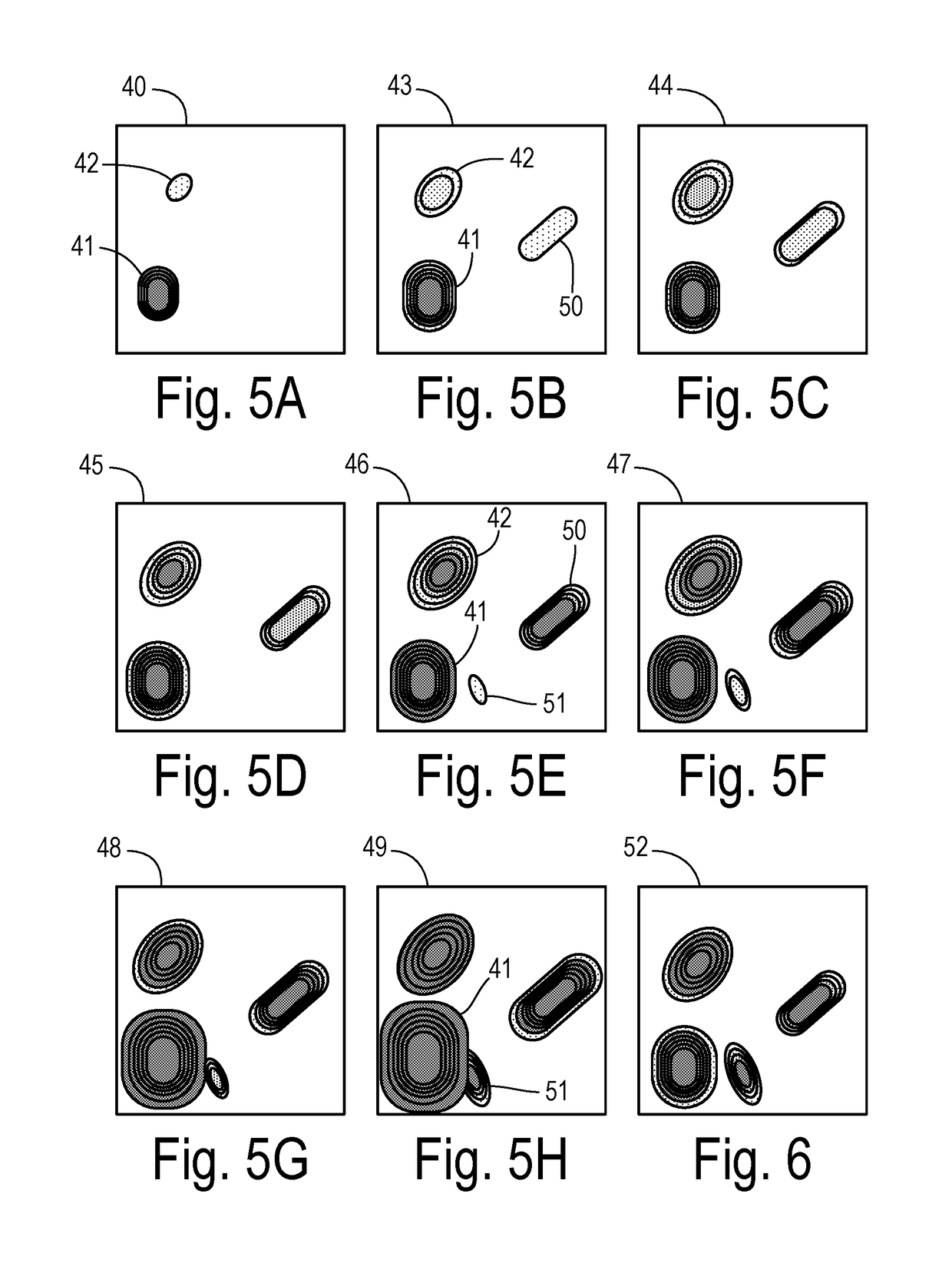Detection of visible light communication sources over a high dynamic range
a visible light communication and high dynamic range technology, applied in the field of visible light communication, can solve the problems of difficult environment for detecting dim signals or signals, application of light-based communication, blooming artifacts, etc., and achieve the effect of high dynamic range (hdr) image, optimal exposure duration and higher frame ra
- Summary
- Abstract
- Description
- Claims
- Application Information
AI Technical Summary
Benefits of technology
Problems solved by technology
Method used
Image
Examples
Embodiment Construction
[0023]FIG. 1 shows a conventional visible light communication system having a VLC transmitter 10 and a VLC receiver 15. Transmitter 10 includes an encoder 11 which receives data 12A to be transmitted, and which drives an LED array 13 to emit a flashing VLC light signal according to the encoded data and a chosen communication protocol. LED array 13 may be part of a dual purpose light source which adds the VLC function to a traffic light, vehicle running light, a LCD / OLED display of a mobile device (e.g. a cell phone), fixed display or signage, or other types of artificial lighting applications. Visible light 14 projected from LED array 13 flashes at a high rate which is undiscernible to the human eye but which carries data to a light detector 16 (e.g., a camera) in receiver 15. A source detector and tracker 17 receives a succession of image frames from camera 16, and uses known techniques for identifying any transmitting VLC sources and extracting the flashing signals inherent in the...
PUM
 Login to View More
Login to View More Abstract
Description
Claims
Application Information
 Login to View More
Login to View More - R&D
- Intellectual Property
- Life Sciences
- Materials
- Tech Scout
- Unparalleled Data Quality
- Higher Quality Content
- 60% Fewer Hallucinations
Browse by: Latest US Patents, China's latest patents, Technical Efficacy Thesaurus, Application Domain, Technology Topic, Popular Technical Reports.
© 2025 PatSnap. All rights reserved.Legal|Privacy policy|Modern Slavery Act Transparency Statement|Sitemap|About US| Contact US: help@patsnap.com



